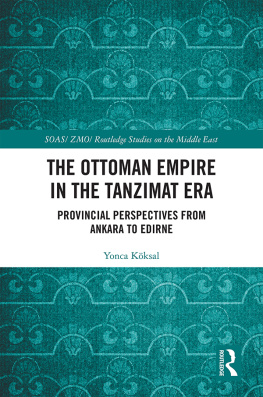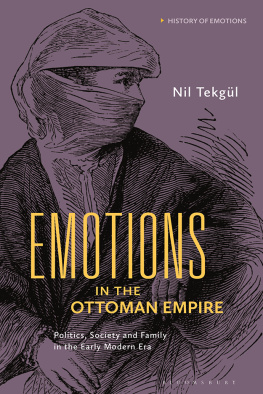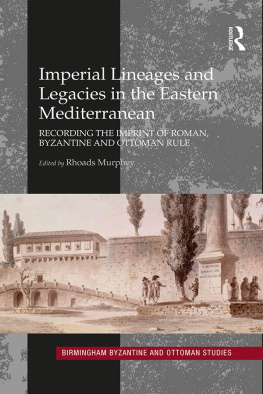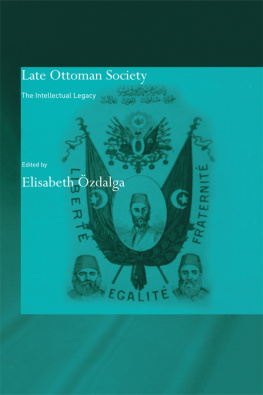Biography of an Empire
The publisher gratefully acknowledges the generous support
of the Ahmanson Foundation Humanities Endowment Fund
of the University of California Press Foundation.
The publisher also gratefully acknowledges the
generous contribution to this book provided by
The Institute of Turkish Studies.
Biography of an Empire
Governing Ottomans in an Age of Revolution

Christine M. Philliou

University of California Press, one of the most distinguished university presses in the United States, enriches lives around the world by advancing scholarship in the humanities, social sciences, and natural sciences. Its activities are supported by the UC Press Foundation and by philanthropic contributions from individuals and institutions. For more information, visit www.ucpress.edu .
University of California Press
Berkeley and Los Angeles, California
University of California Press, Ltd.
London, England
2011 by The Regents of the University of California
Library of Congress Cataloging-in-Publication Data
Philliou, Christine May.
Biography of an empire : governing Ottomans in an age of revolution / Christine M. Philliou.
p. cm.
Includes bibliographical references and index.
ISBN 978-0-520-26633-9 (cloth : alk. paper)
ISBN 978-0-520-26635-3 (pbk. : alk. paper)
1. TurkeyHistoryTanzimat, 18391876. 2. PhanariotsTurkeyHistory19th century. 3. Vogorides, Stephanos, 17801859. I. Title.
DR565.P456 2011
956'.015dc22 2010013361
Manufactured in the United States of America
20 19 18 17 16 15 14 13 12 11
10 9 8 7 6 5 4 3 2 1
This book is printed on Cascades Enviro 100, a 100% post consumer waste, recycled, de-inked fiber. FSC recycled certified and processed chlorine free. It is acid free, Ecologo certified, and manufactured by BioGas energy.
To Reza, Daphne, and Erfan
CONTENTS
ILLUSTRATIONS
FIGURES
MAPS
TABLE
NOTE ON TRANSLITERATION
There are a number of transliteration systems for Ottoman Turkish and modern Greek, the two languages that predominate here, as well as for Bulgarian and Romanian, terms and names from which also appear from time to time in this book. I have tried to stick with a basic modern Turkish rendering of Ottoman Turkish words and a simplified modern Greek transliteration style whenever possible for terms and phrases. As far as proper names, phanariots are particularly hard to standardize, behaving as linguistic chameleons as much as political ones (e.g., the Soutso/Soutzo/Suu/Drakozade/Souzzo family). For the better-known families, I have opted for the most commonly used variant of their name, and for the lesser-known clans, I have tended toward the modern Turkish phonetic rendition whenever possible. For Stephanos Vogorides, I have chosen the Greek variant (rather than Stoiko Stoikov, his original name, the Bulgarian variant of his adult name Stefan Bogoridi, or the Turkish Istefanaki Bey), and I have done so for Kostaki (Constantine) Musurus (rather than Kostaki Paa, Musurus Paa, or Constantine Mousouros) as well. For nonphanariots, I have opted for the modern Turkish variant of names (Mehmet Ali rather than the Arabic variant, Muhammad Ali, for instance). Finally, when I provide multiple variants for a term, T. signifies Turkish; G., Greek; B., Bulgarian; R., Romanian; and Sl., Slavic.
Christians with Greek names were often referred to in Turkish by their Greek diminutive form. Someone named Constantine (Konstantinos) in Greek, for instance, would be called Kostaki, the diminutive Greek form, adapted into Turkish. This book abounds with characters such as Manolaki (Emmanuel Manolis Manolaki) Efendi, Istefanaki (Stephanos Stefanaki Istefanaki) Bey, and Yanaki (Ioannis Yanni Yanaki). Not wanting to lose this pattern of linguistic/cultural transmission and adaptation and also not wanting to confuse the reader, I have included the diminutive nicknames when relevant but placed the fuller name in brackets after the first mention of that name.
For place names I have tried to stay with the Turkish variant, which is why I refer to the Ottoman capital as stanbul rather than Constantinople, despite the fact that in the nineteenth century it was commonly known in English as Constantinople. For other places, which lie outside of Turkey today, I have tried to provide the standard national variant (Ioannina in Greece) but have provided the Turkish variant (Yanya) in brackets.
Since I have opted for the use of Turkish diacritics, I provide below a guide to Turkish pronunciation:
a | like o in oz |
e | like a in hay |
i or | like ee in meet |
or I | like u in muddle |
o | like ow in low |
or | like the German |
u | like oo in tool |
or | like the French u |
or | like ch in chimney |
soft g, hardly pronounced |
or | like sh in shed |
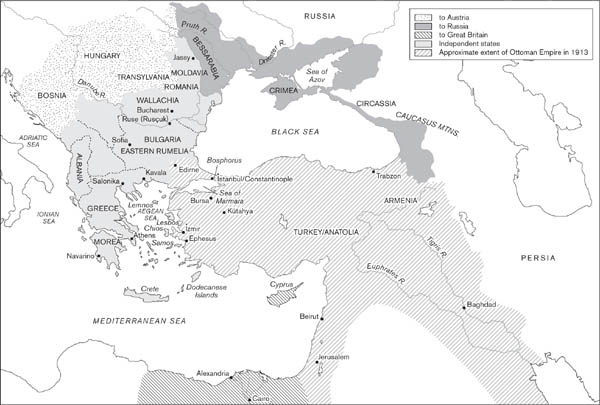
MAP 1. Ottoman Empire, 16831913.

MAP 2. Moldavia and Wallachia, 17741812.
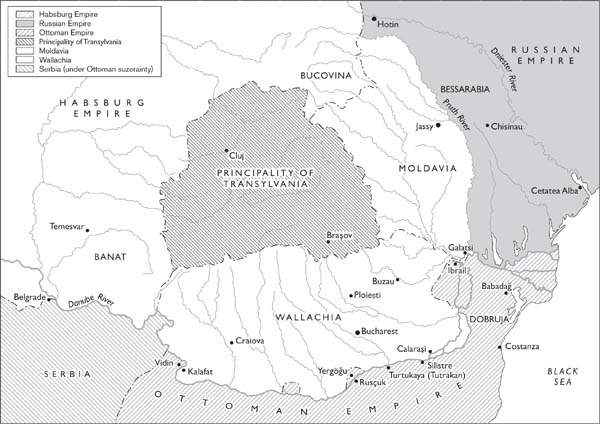
MAP 3. Moldavia and Wallachia, 18121829.
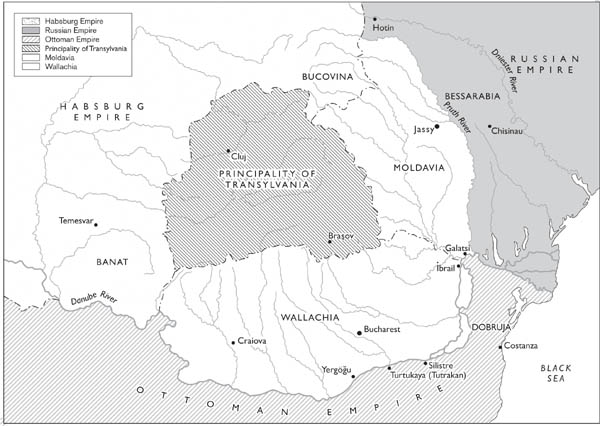
MAP 4. Moldavia and Wallachia, 1829.
PREFACE

The View from the
Edge of the Center
The origins of this book lie in a fundamental split in the way we remember the Ottoman Empire. For much of the twentieth century, the prevailing assumption was that the Ottoman legacy was one of authoritarianism, ethnic strife, and economic and cultural backwardness in the Middle East and Balkans. More recently, scholars have begun to hark back to a cosmopolitan multiconfessional Ottoman Empire, where Jews, Christians, and Muslims lived virtually free of communal strife under the umbrella of a flexible and accommodating Ottoman state. Were the Ottomans a force for stagnation and repression that kept the modern world at bay, or were they early modern pioneers of tolerance and cosmopolitanism?
The implicit question in this debate is whether the Ottoman Empire was behind or ahead of the (western European) norm. The one view, that the Ottomans were behind, is based on entrenched orientalist stereotypes that date back to the Ottoman period itself. The other view, which implies that they were ahead of their time, and thus ahead of Europe, with their tolerance for a multiconfessional subject population, springs from a strong revisionist impulse. Adherents of both views have a wealth of evidence from which to draw. It is the very acceptance of these terms
Next page

